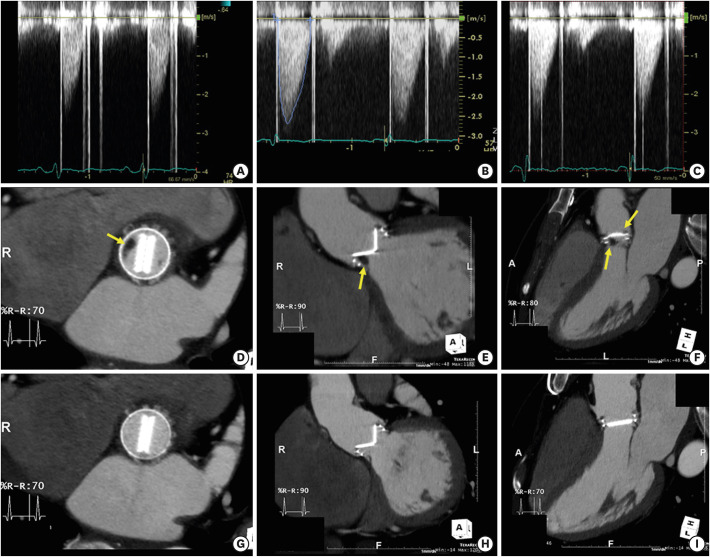 | Figure 1Echocardiography and cardiac computed tomography of subclinical mechanical valve thrombosis. (A) Continuous-wave Doppler of the mechanical aortic valve on postoperative pre-discharge echocardiogram. (B) Continuous-wave Doppler of the mechanical aortic valve on 6-month follow-up echocardiogram. (C) Continuous-wave Doppler of the mechanical aortic valve after intravenous unfractionated heparin therapy for 5 days. (D-F) Low attenuating mass lesions on the right side of the mechanical aortic valve on 6-month follow-up CT. (G-I) Resolution of mass lesions on the right side of the mechanical aortic valve on the follow-up CT after intravenous unfractionated heparin therapy for 5 days.CT = computed tomography.
|
Notes
Funding: The authors received no financial support for the research, authorship, and/or publication of this article.
Data Sharing Statement: The data required to reproduce these findings cannot be shared since this manuscript contains images of a single patient.
Author Contributions:
Conceptualization: Lee S, Ha JW, Shim CY.
Data curation: Kim MJ, Shim CY.
Formal analysis: Kim YJ, Shim CY.
Investigation: Kim MJ, Kim YJ, Shim CY.
Methodology: Kim YJ.
Resources: Shim CY.
Supervision: Lee S, Kim YJ, Hong GR, Ha JW.
Validation: Hong GR.
Writing - original draft: Kim MJ, Shim CY.
Writing - review & editing: Lee S, Hong GR, Shim CY.




 PDF
PDF Citation
Citation Print
Print




 XML Download
XML Download